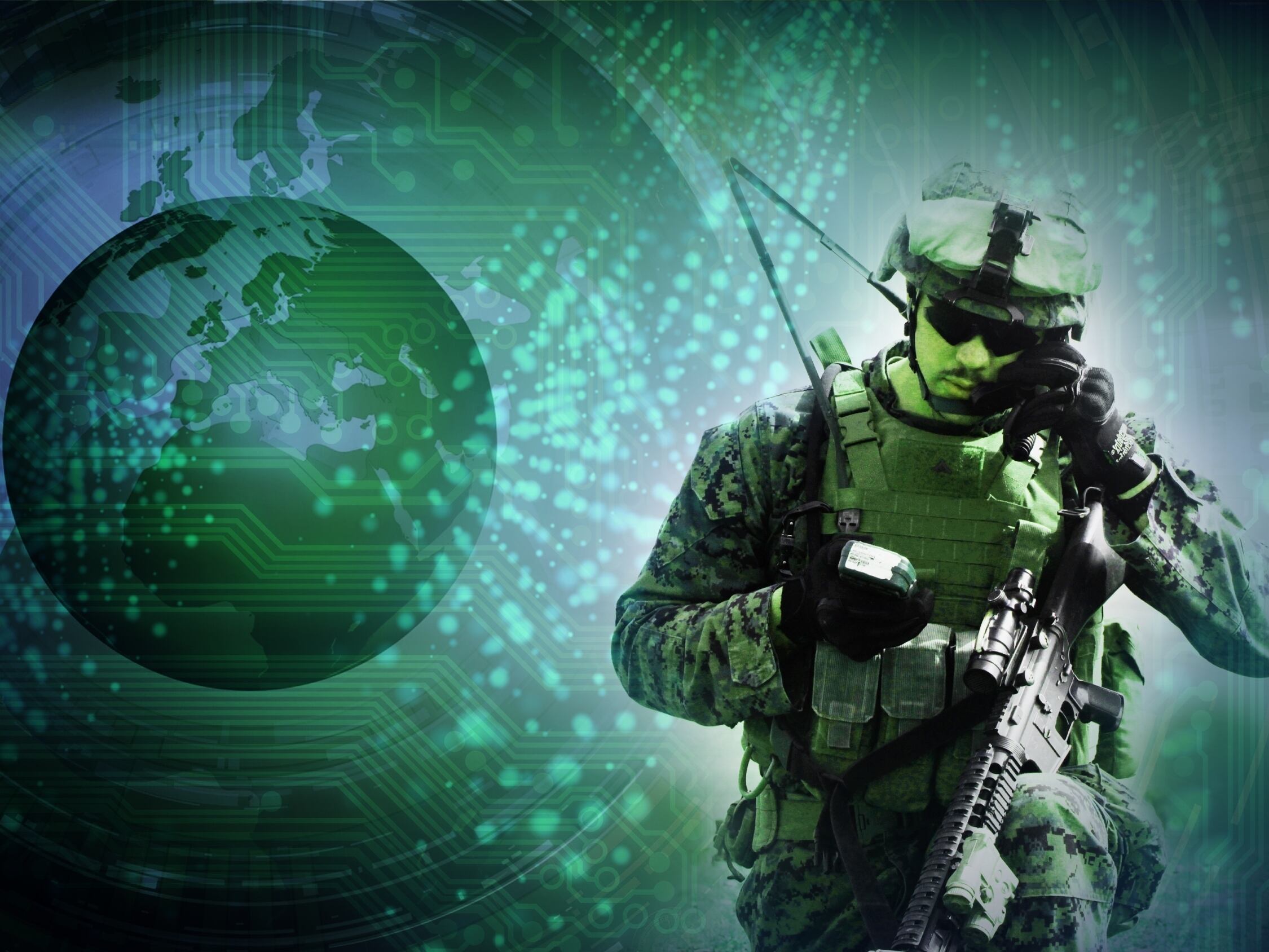More years ago than perhaps I would like to remember, the commander of a Special Operations Forces organization posed the question “What do you need?” to a couple of senior SOF operators during a discussion of command, control, communications, and computers. The resulting white board drawing that came to be colloquially known as the “Dog Camera Diagram” formed the basis for what is arguably the best tactical fusion of C4 Intelligence, Surveillance, Reconnaissance (C4ISR) capability on the battlefield today. Depicting what was then fantasy, the white board diagram showed overhead platforms, ground sensors including a canine, overwatch support, and reach-back information sharing all fused to the operator via handheld device.
Today, that fantasy manifests itself in the form of an unblinking eye from airborne ISR assets plus the around-the-corner intelligence from nano drones to robotic or canine reconnaissance platforms. It provides close air support or other long-range fires via a hand-held Link 16 radio that reduces the traditional 9-Line call for fire process from minutes to seconds. And finally, all the information is fused on a satellite communications or line of site tethered tactical assault kit device that gives SOF Operators real-time, multi-sensor information where and when they need it.
Operations in Iraq, Afghanistan, and other locales have proven the current capability, but as the Department of Defense shifts its focus from a violent extremist organization fight to great power competition, Special Operations Forces are also making the shift and so must SOF C4ISR.
The airborne ISR unblinking eye that was formed during Operation Enduring Freedom and Operation Iraqi Freedom from an ad hoc collection of manned and unmanned platforms was inefficient, stove piped, and vulnerable. Airborne ISR now needs to be institutionalized into a Department wide, always available, global capability. With airborne ISR assets needed from non-permissive to permissive operating environments, this capability must incorporate uniform standards and protocols for the three pillars of airborne ISR: platforms/sensors, data transport architecture, and processing, exploitation, and dissemination while still giving Services and SOF the flexibility to operate within those parameters.
As the decision cycle continues to accelerate, and SOF operators are expected to pivot in stride, timely, on-demand information is critical. The TAK ecosystem has matured and become the preferred option for SOF Operators. TAK is used for direct actions missions, remote advise and assist, foreign internal defense and the full spectrum of SOF operations. But it is only as good as the information it receives. High capacity SATCOM, hand-held Link 16, mobile ad hoc networking (MANET), 5G, and the new modular hand-held radio all greatly improve the information sharing capacity and will become even more powerful as SOF deploys edge computing capability and tactical cloud stacks synchronized to the greater SOF information environment. These capabilities are crucial for units operating in the coming denied, disconnected, intermittent, and limited bandwidth environment. Using applications developed on the Agile Dagger DevSecOps platform, hyper-connected SOF Operators will still enjoy instantaneous access to relevant data and the means to apply it to the tactical mission set.
After operating for 20 years with cyber domain dominance, the transition to near-peer competition has brought with it a reemergence of cyber and electronic warfare threats. These threats are not just directly from Russia in the Ukraine or China in the Spratly Islands, but also indirectly with their proxies in the Middle East/Africa and VEOs around the globe. Balancing the threat with a desire for high throughput communications means SOF will need to build additional agility into future C4ISR architectures. While high capacity SATCOM and 5G are becoming a reality, C4 planners must also develop concepts and systems for operating in a contested environment. With SATCOM degraded or eliminated, advanced high frequency (HF) and troposcatter systems capability can provide a reasonable network backbone for vital command and control purposes while niche low probability of intercept and low probability of detection capabilities can provide discrete mission specific functions such as precision navigation and timing, and non-radio frequency communications.
No discussion of technology would be complete without mentioning the impact on the SOF Operator. Leveraging technology and the power of machine-to-machine interfaces will be critical to the vision of the hyper-enabled SOF Operator. But, leveraging the technology must also include reducing the complexity and weight of the combined equipment to allow SOF Operators freedom of action within the battlespace.
John A. Wilcox is a member of the Global SOF Foundation Advisory Board. He spent 36 years with the Department of Defense including his last eight years with the Department as the J6/CIO for the United States Special Operations Command. He is also the vice president for global strategy for the By Light family of companies.








